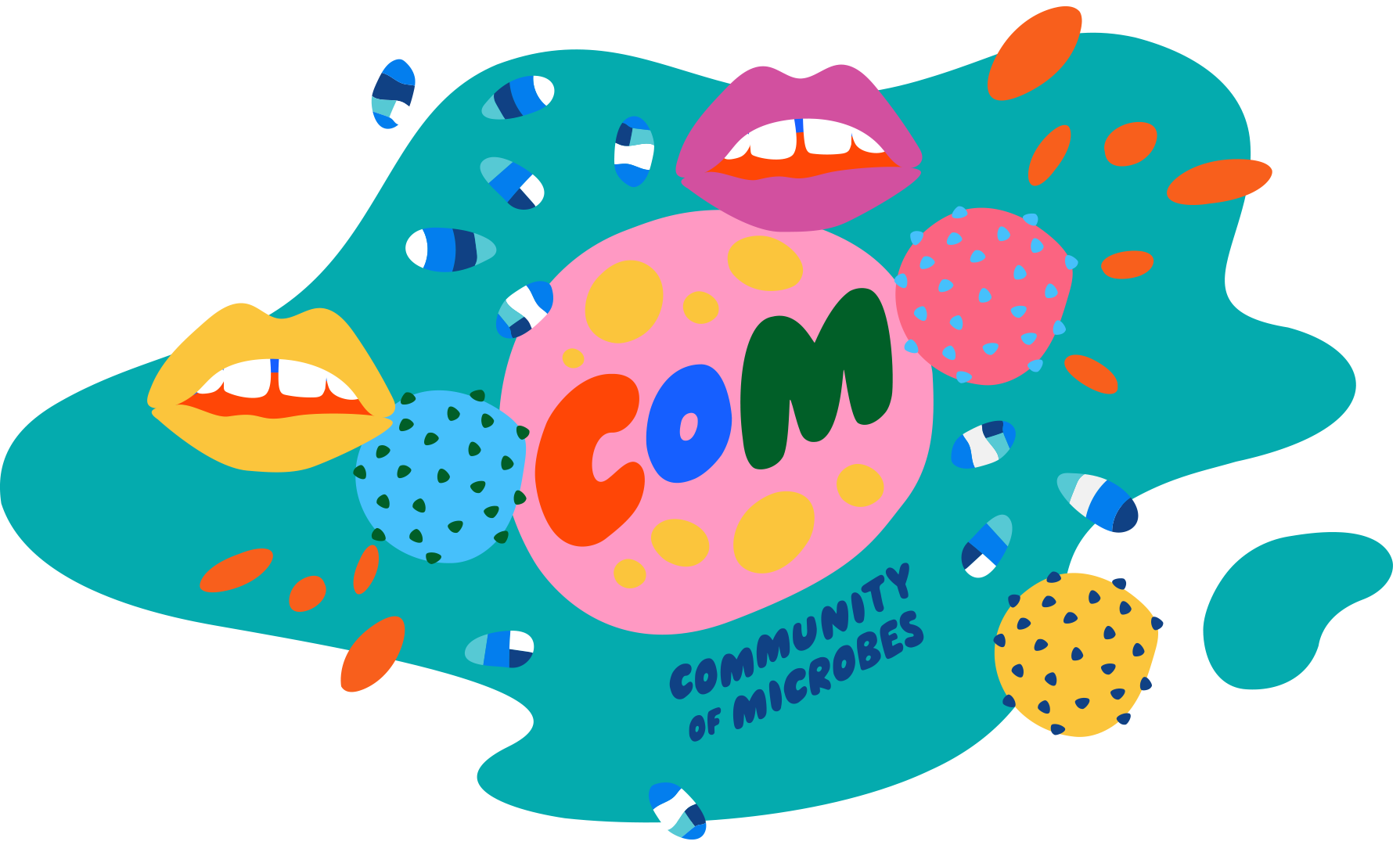
Human Mouth
From the smooth ridges of the top of our teeth, to the undulating valleys of our tongue, to the deep-sea crevices of our gums, the mouth is filled with unique habitats to support hundreds of species of microorganisms. With the constant influx of readily available food—from everything we eat—the microbes have access to all sorts of food. Like a an open plot of soil that quickly goes from an open field to a field with weeds to a forest of growing trees, teeth have pioneer microbes that land on them, grow and then offer a platform for hundreds of layers of microbial cells to grow on one another. Building microbial neighborhoods on top of one another. The mouth environment can contain hundreds of different species of microbes.

The Players
Veillonella species. As soon as we are born, our mouth becomes home to a microscopic ecosystem. Species of the tiny round Veillonella bacteria are some of the first species to make our mouths homes. Soon they are covered in layers of other bacterial species that are a normal part of our mouth ecology - just like a forest has many species of trees, insects, birds, and mammals. Veillonella live in the tiny crevices in your mouth where no oxygen exists, they are anaerobic. Some species of Veillonella are responsible for making bad morning breath. Their waste products are hydrogen sulfide, the smell of rotten eggs.

Streptococcus mutans and Streptococcus oligofermentans, a tale of two rivals fighting it out on the surfaces of our teeth. Streptococcus mutans are some of the species often responsible for tooth decay while Streptococcus oligofermentans can help combat some of the cavity-producing effects of Streptococcus mutans. Their names sound like the microbes that cause “strep throat,” but they do not. Instead they are a normal part of our mouth ecosystem. They are both non-motile, but grow in chains of spheres, like a pearl necklace. They adhere to the surfaces of our teeth, cloaked in a type of thin goo, allowing some of them to stay even when we brush our teeth or use mouthwash. When these enterprising microbes feed on sugar from our food, Streptococcus mutans produce waste acids, which you can then thank for any cavities you have had. These are the acids that start to dissolve our teeth! Streptococcus oligofermentans, on the other hand (tooth?) can be more commonly found in mouths without cavities. They actually use the acid produced by Streptococcus mutans to create hydrogen peroxide which inhibits tooth decay. Scientists are investigating if we can harness S. oligofermentes to help us fight dental cavities.

Fusobacterium nucleatum - In the microscopic jungle of our mouth, Fusobacterium nucleatum make up some of the approximately 300 layers of bacterial cells that coat our teeth and tongue. This community consists of species, next to species in a mosh pit of cells held together in a webbing of bacterial-made goo. Fusobacterium nucleatum are long skinny cells that keep the party going by helping build up the layers of cells between those that colonize our naked teeth and tongue cells, to those bacterial cells that are the late-comers, living at the edge of this microbial community and the mismash of saliva, food, and beverages that wash through our oral habitat.

Learn More / Participate in Research
1 To find out more about the oral microbiome project
2 To find out more about the microbial ecology of the mouth
3 Project using citizen science data to learn about the mouth microbes
4 Why it’s important to study where microbes are in our mouth
5 Read about the science of how Streptococcus oligofermentans
